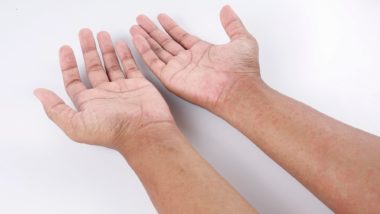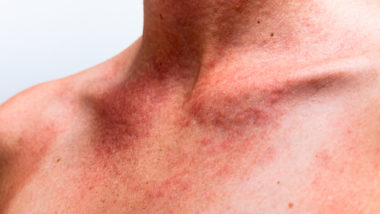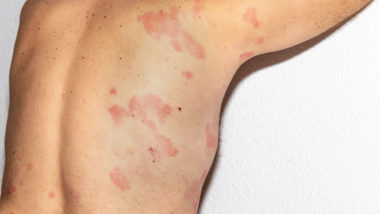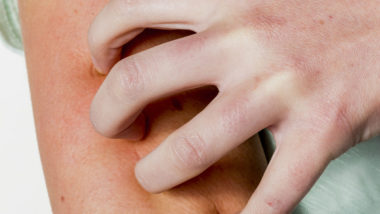Top Class Actions’s website and social media posts use affiliate links. If you make a purchase using such links, we may receive a commission, but it will not result in any additional charges to you. Please review our Affiliate Link Disclosure for more information.
There are many medications that bring with them serious side effects, but some are more serious than others. Read the information below to learn about the chance of developing a serious rash with Lamictal use, as well as other symptoms to watch out for.
What Is Lamictal?
Lamictal is the brand name of the medication lamotrigine, made by GlaxoSmithKline. This medication is used primarily to treat seizures, but it is also prescribed to treat bipolar disorder.
How Common Is a Rash with Lamictal?
Around ten percent of those taking Lamictal will develop a rash. There are some groups that are at greater risk such as those also taking other antiepileptic medications such as divalproex sodium and valproic acid. Women are also slightly more likely to develop a rash than men. According to the Food and Drug Administration (FDA), children between the ages of two and 16 are more likely to develop a rash with Lamictal use, and that rash is more likely to be severe.
When Do Lamictal Rashes Appear?
Generally, Lamictal rashes appear within eight weeks of beginning treatment. If the treatment is stopped, the rash normally goes away on its own without serious health effects. The FDA reports that some isolated cases have developed after roughly six months of use, so the likelihood of developing the rash at different stages of use can’t be reliably determined. If you have passed the eight-week point without developing a rash, that doesn’t mean that one won’t develop.
What Are the Symptoms of a Lamictal Rash?
According to Medical News Today, there are some symptoms generally associated with Lamictal rashes. If you experience any of these symptoms, let your doctor know. Only a medical professional can diagnose a Lamictal rash and determine how serious it is.
Signs of a rash with Lamictal include the following:
- fever
- hives
- itching skin
- more than one area of red blisters, often near the face or mouth
- feeling unwell generally
Some of the signs of a more serious reaction are:
- cough
- flu-like symptoms
- body aches
- peeling skin
- incredibly painful blistering
- redness and inflammation of or near the eyes
- swollen lymph nodes
 If I Experience Rash with Lamictal Use, What Should I Do?
If I Experience Rash with Lamictal Use, What Should I Do?
If you believe you may be developing a rash or other serious side effect with Lamictal use, contact your doctor immediately. The FDA recommends cessation of Lamictal use if a rash appears. Remember, do not stop treatment without speaking to your doctor first. A sudden stop in treatment can lead to uncontrollable seizures and other adverse effects.
How Deadly Can a Rash with Lamictal Be?
According to the FDA, Lamictal rash deaths are so rare that a precise estimate of the likelihood isn’t possible. Young people, aged two to 16, are more likely to develop complications, as are those taking other epilepsy treatments and those prescribed an initial dose that exceeds the recommended amount. However, some rashes associated with Lamictal are benign. The likelihood that a rash will be deadly can’t be judged definitively, so be sure to contact your doctor if you see any signs of a rash.
What Complications Can Result from a Lamictal Rash?
For the majority of patients, Lamictal rashes require no treatment. Stopping the medication is generally enough, but there are serious complications that can occur with a Lamictal rash. There are three severe conditions that may arise: Stevens-Johnson syndrome, toxic epidermal necrolysis, and DRESS syndrome.
Stevens-Johnson syndrome is an illness caused by either medications or infections. If left untreated, this condition can lead to blindness, burn-like injuries to the skin and mucous membranes, and even death. The Mayo Clinic recommends seeking immediate medical attention if you see any sign of this condition.
Toxic epidermal necrolysis is a condition that causes the skin to peel off. The symptoms associated with it are similar to those caused by severe burns. Even if treated, this condition can be fatal to ten percent of sufferers.
DRESS syndrome, or Drug Reaction with Eosinophilia and Systemic Symptoms, is a little-understood condition caused by medications. This condition leads to an over-production of white blood cells which manifests itself as severe flu symptoms. If left untreated, DRESS can cause heart failure, liver failure, or death in around ten percent of cases.
If you or a loved one developed a Lamictal rash or other serious Lamictal side effects, you may qualify to pursue compensation by filing a Lamictal lawsuit. See if you qualify by filling out the short form on this page. It’s absolutely free to participate, so act now!
ATTORNEY ADVERTISING
Top Class Actions is a Proud Member of the American Bar Association
LEGAL INFORMATION IS NOT LEGAL ADVICE
Top Class Actions Legal Statement
©2008 – 2024 Top Class Actions® LLC
Various Trademarks held by their respective owners
This website is not intended for viewing or usage by European Union citizens.
Get Help – It’s Free
Join a Free Lamictal Lawsuit Investigation
If you believe your diagnosis was caused by Lamictal, you may be entitled to compensation by filing a Lamictal lawsuit. Learn more by filling out the form on this page for a free case evaluation.
An attorney will contact you if you qualify to discuss the details of your potential case.
PLEASE NOTE: If you want to participate in this investigation, it is imperative that you reply to the law firm if they call or email you. Failing to do so may result in you not getting signed up as a client or getting you dropped as a client.
Oops! We could not locate your form.


 If I Experience Rash with Lamictal Use, What Should I Do?
If I Experience Rash with Lamictal Use, What Should I Do?










